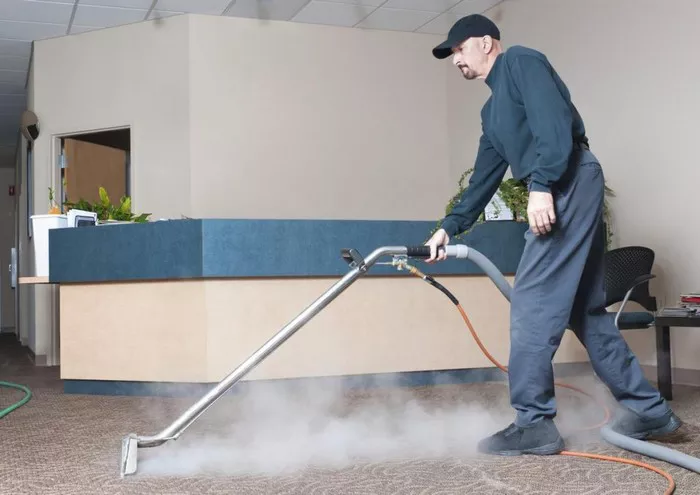Floor steam cleaners are innovative devices designed to harness the power of steam to effectively clean and sanitize various types of flooring surfaces. Unlike traditional cleaning methods that rely on harsh chemicals, steam cleaners use high-temperature steam to loosen dirt, grime, and stains, making them easier to remove. This environmentally-friendly approach not only cleans floors but also eliminates bacteria and allergens without leaving behind chemical residues.
Highlight the benefits of using steam instead of chemicals for cleaning floors.
1. Chemical-Free Cleaning: Steam cleaners offer a natural and chemical-free way to clean floors, making them safe for use around children and pets.
2. Efficient Cleaning: Steam penetrates deep into the pores of the floor surface, effectively lifting and removing dirt and grime without the need for scrubbing.
3. Sanitization: The high temperatures generated by steam cleaners kill bacteria, viruses, and germs, leaving your floors hygienically clean.
4. Environmentally Friendly: By eliminating the need for chemical cleaners, steam cleaning reduces environmental impact and promotes sustainability.
Types of Floors Suitable for Steam Cleaning
Steam cleaners are suitable for a wide range of flooring materials, including:
1. Sealed Tile: Ceramic, porcelain, and stone tiles are ideal for steam cleaning, as the sealed surface can withstand the high temperatures and moisture.
2. Hardwood: Sealed hardwood floors can be safely cleaned with a steam cleaner, but it’s essential to follow the manufacturer’s recommendations to prevent damage.
3. Laminate: Some laminate floors are suitable for steam cleaning, but it’s crucial to check with the manufacturer first to avoid voiding the warranty.
4. Vinyl: Vinyl floors can generally withstand steam cleaning, but it’s essential to avoid excessive moisture that could seep into seams and edges.
Preparation and Safety Tips
Before using a steam cleaner on your floors, it’s essential to take the following preparation and safety measures:
1. Clear the Area: Remove any loose debris, furniture, or obstacles from the area to be cleaned to ensure unobstructed access.
2. Ventilation: Open windows and doors to provide adequate ventilation while using the steam cleaner to prevent the buildup of steam and moisture.
3. Safety Gear: Wear protective gear, such as gloves and closed-toe shoes, to prevent burns from hot steam or accidental slips on wet surfaces.
Operating the Steamer
To effectively use a floor steam cleaner, follow these step-by-step instructions:
1. Fill the Water Tank: Fill the water tank of the steam cleaner with clean water according to the manufacturer’s instructions, avoiding overfilling.
2. Select Temperature Setting: Depending on the type of flooring and the level of dirtiness, adjust the temperature setting on the steam cleaner. Higher temperatures are suitable for stubborn stains, while lower temperatures are ideal for regular maintenance cleaning.
3. Steam Control: Most steam cleaners come with adjustable steam control settings. Start with a lower steam setting and adjust as needed based on the level of dirtiness and the type of flooring.
4. Maneuvering the Steamer: Hold the steam cleaner at a slight angle and move it slowly across the floor in overlapping passes to ensure thorough coverage. Avoid leaving the steam cleaner in one spot for too long to prevent damage to the flooring.
5. Tackling Stubborn Stains: For stubborn stains, hold the steam cleaner over the affected area for a few seconds to allow the steam to penetrate the dirt and grime. Use a microfiber cloth or scrub brush to gently agitate the stain before wiping it away.
6. Sanitizing Floors: To sanitize floors, hold the steam cleaner over the surface for several seconds, allowing the steam to reach and kill bacteria and germs.
Maintenance of the Steamer
Proper care and maintenance of your steam cleaner are essential to ensure its longevity and performance:
1. Cleaning the Mop Head: After each use, remove the mop head from the steam cleaner and wash it thoroughly with warm, soapy water. Allow the mop head to air dry completely before reattaching it to the steam cleaner.
2. Descaling the Tank: Over time, mineral deposits can accumulate in the water tank, affecting the performance of the steam cleaner. Periodically descale the tank using a mixture of vinegar and water or a commercial descaling solution.
3. Storing the Device: Store the steam cleaner in a cool, dry place away from direct sunlight and moisture. Ensure that the water tank is empty before storing the device to prevent mold and mildew growth.
Environmental and Health Benefits
In addition to its cleaning efficacy, steam cleaning offers several environmental and health benefits:
1. Reduced Chemical Usage: By eliminating the need for chemical cleaners, steam cleaning reduces chemical usage and exposure, promoting a healthier indoor environment.
2. Allergen Reduction: The high temperatures generated by steam cleaners effectively kill dust mites, mold, and other allergens, reducing allergy symptoms and improving indoor air quality.
3. Water Conservation: Steam cleaning requires minimal water compared to traditional mopping methods, making it a more water-efficient cleaning solution.
Conclusions and Recommendations
Using a floor steam cleaner offers a safe, efficient, and eco-friendly way to clean and sanitize your floors without the use of harsh chemicals. When choosing a steam cleaner, consider factors such as the type of flooring in your home, the size of the area to be cleaned, and your budget. For larger areas or heavy-duty cleaning tasks, opt for a steam cleaner with a larger water tank and adjustable steam settings. Additionally, choose a model with accessories such as scrub brushes and extension wands for added versatility. By following the tips and techniques outlined in this guide, you can achieve sparkling clean floors and enjoy the many benefits of steam cleaning.

